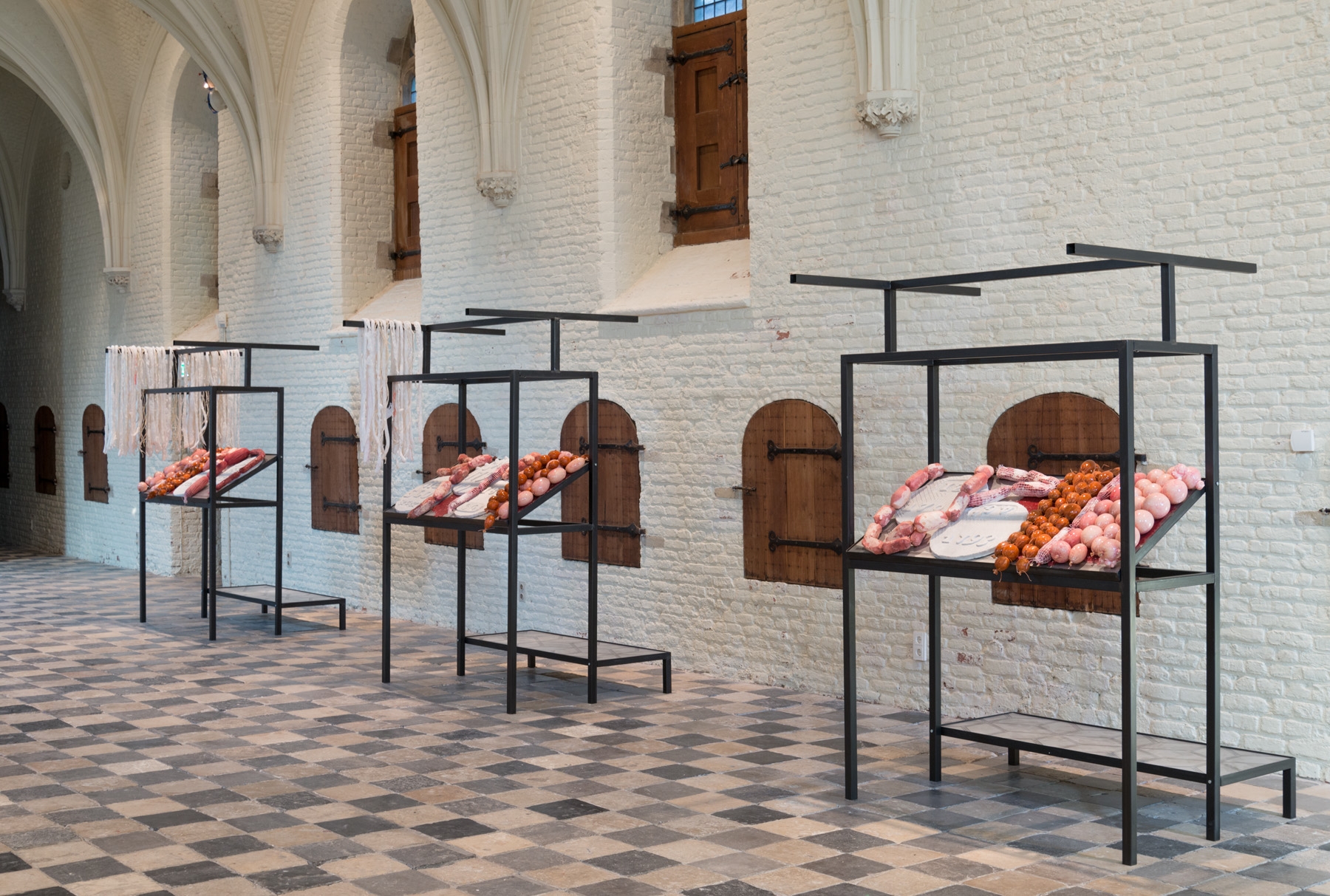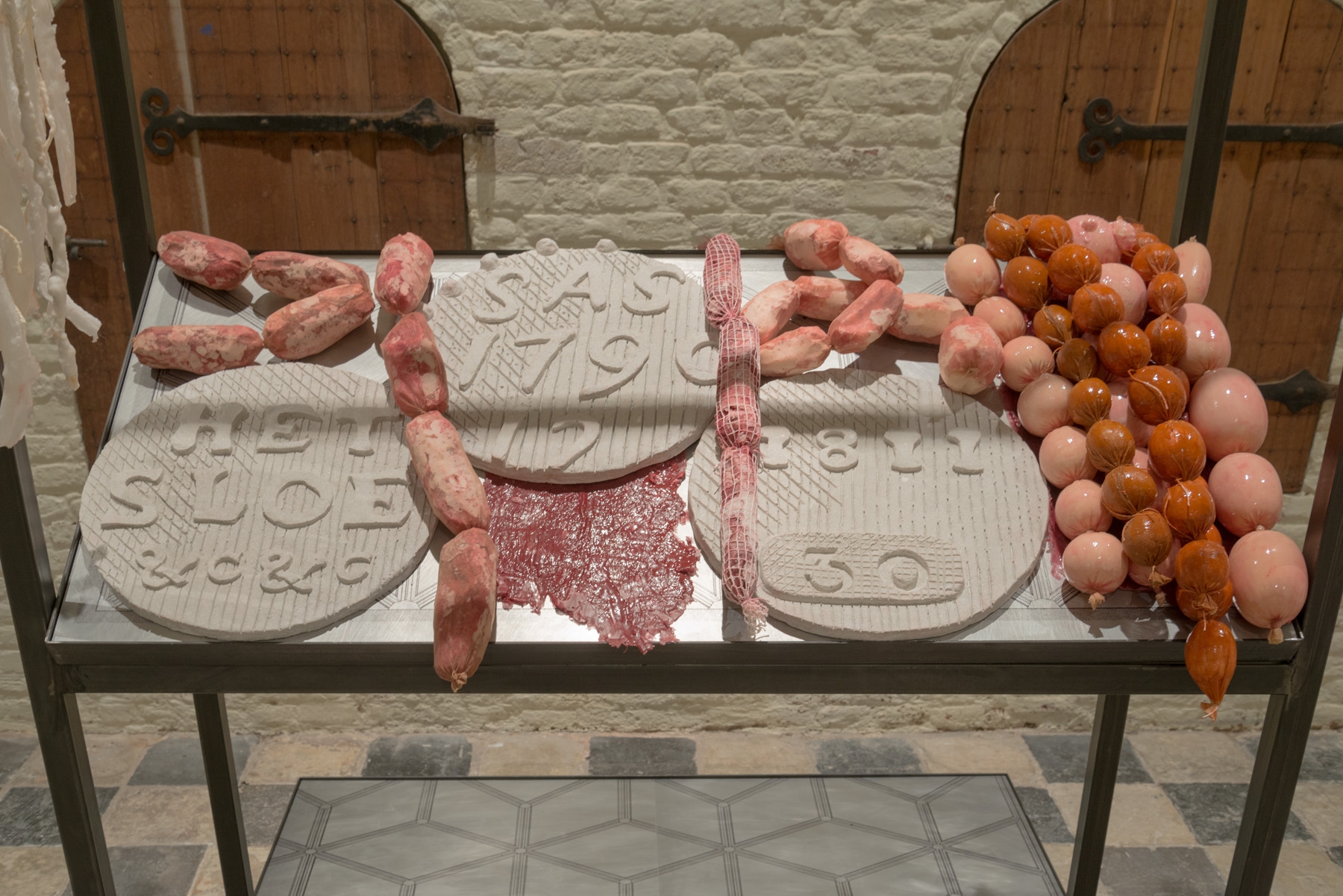Meat Stands I-III
Marina Pinsky
Sculpture
2017

Meat stand I (1793-1796), Meat Stand II (1790-1811), Meat Stand III (1829)
Intrigued by the former function of Vleeshal – a meat market inside of the former city hall used by butchers over decades – Marina Pinsky decided to fabricate market stands, sausages and other sorts of meat on her own. The three market stands not only display her ware, but also present plates that are enlarged copies of beacon weights. These lead tokens were used in an alternative economical system; ships passing the sluices and the bridges of the sea arm The Slow had to pay with these coins. The following information is inscribed on them: “SAS”, which refers to the Dutch word for a sluice, a water channel controlled at its head by a gate; the year of the coin’s production; and the value it had in “ST” which is an abbreviation of “stuivers”, a predecimal coin used in the Netherlands that circulated until the Napoleonic Wars.
The proximity of the sea through the sea arm The Slow largely contributed to Middelburg’s wealth. During the Middle Ages, the city became an important trading centre in the commerce between England and.the rising cities of Flanders. It is in this period that the building of Middelburg’s city
hall was started, a process that lasted from 1452 to 1520. Until the end of the 16th century it was the largest trading city of the Northern provinces. In the 17th century it became the most important center for the VOC, the Dutch East India Company, after the capital Amsterdam. With the silting of Het Sloe in the 19th century, the city’s power diminished. It’s the now buried trench of Pinsky’s exhibition title.
